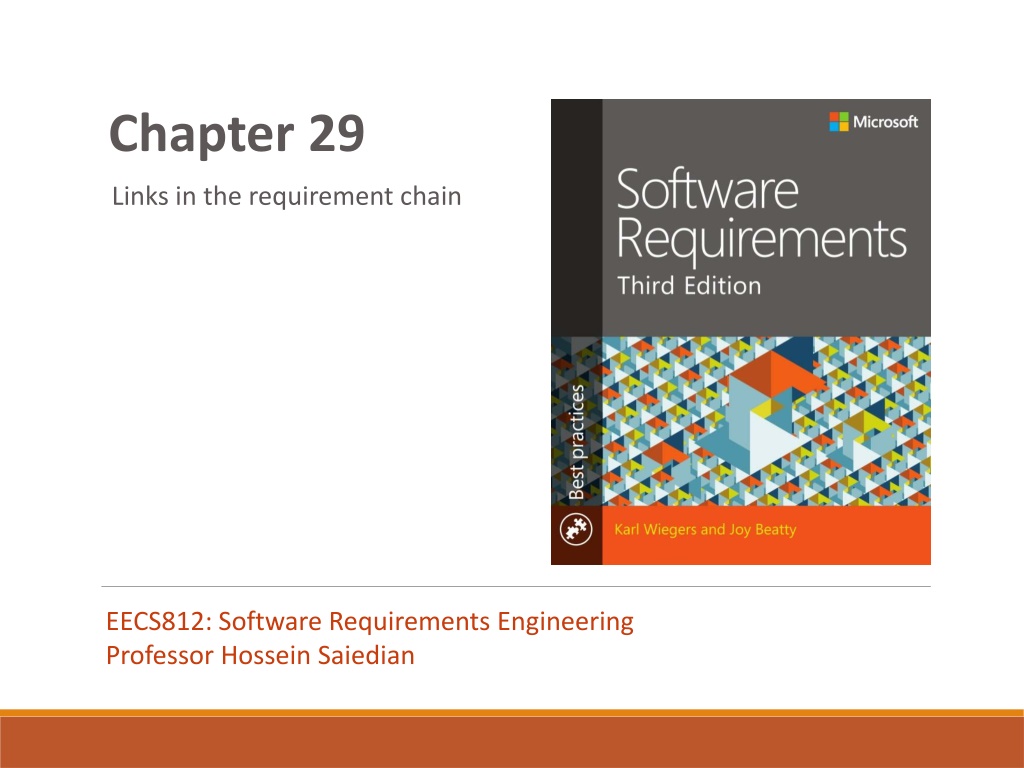Tracing Requirements in Software Engineering
"This chapter delves into requirements tracing, links, and dependencies in software engineering, emphasizing the importance of understanding and identifying necessary modifications to implement requirements changes. Motivations for tracing requirements, including finding missing or unnecessary requirements, certification and compliance, change impact analysis, maintenance, project tracking, reengineering, reuse, and testing, are discussed. Tools and procedures for requirement tracing, as well as the role of traceability matrices, are also covered."
Download Presentation

Please find below an Image/Link to download the presentation.
The content on the website is provided AS IS for your information and personal use only. It may not be sold, licensed, or shared on other websites without obtaining consent from the author. Download presentation by click this link. If you encounter any issues during the download, it is possible that the publisher has removed the file from their server.
E N D
Presentation Transcript
Chapter 29 Links in the requirement chain EECS812: Software Requirements Engineering Professor Hossein Saiedian
This chapter will help you to Understand requirements tracing Understand links and dependencies between requirements Identify anything necessary to modify to implement a requirements change EECS812: Software Requirements Engineering 2
Tracing requirements Follow requirements forward and backward Traceable versus traced EECS812: Software Requirements Engineering 3
Tracing requirements EECS812: Software Requirements Engineering 4
Motivations for tracing requirements Finding missing requirements Finding unnecessary requirements Certification and compliance Change impact analysis Maintenance Project tracking Reengineering Reuse Testing EECS812: Software Requirements Engineering 5
The requirements traceability matrix functional requirements EECS812: Software Requirements Engineering 6
The requirements traceability matrix nonfunctional requirements Quality Portability Security EECS812: Software Requirements Engineering 7
Tools for requirement tracing Matrix helps find suspect links EECS812: Software Requirements Engineering 8
A requirements tracing procedure Educate the team Select the link relationships Choose the type of traceability matrix Identify the parts of the product to trace Identify individuals and roles Make sure links are updated Define labeling conventions Provide ongoing Audit the trace EECS812: Software Requirements Engineering 9
Summary Always do at least a minimum of requirements tracing Understand links and dependencies between requirements Try to identify anything you might need to modify to implement a requirements change EECS812: Software Requirements Engineering 10

 undefined
undefined




 undefined
undefined undefined
undefined






















